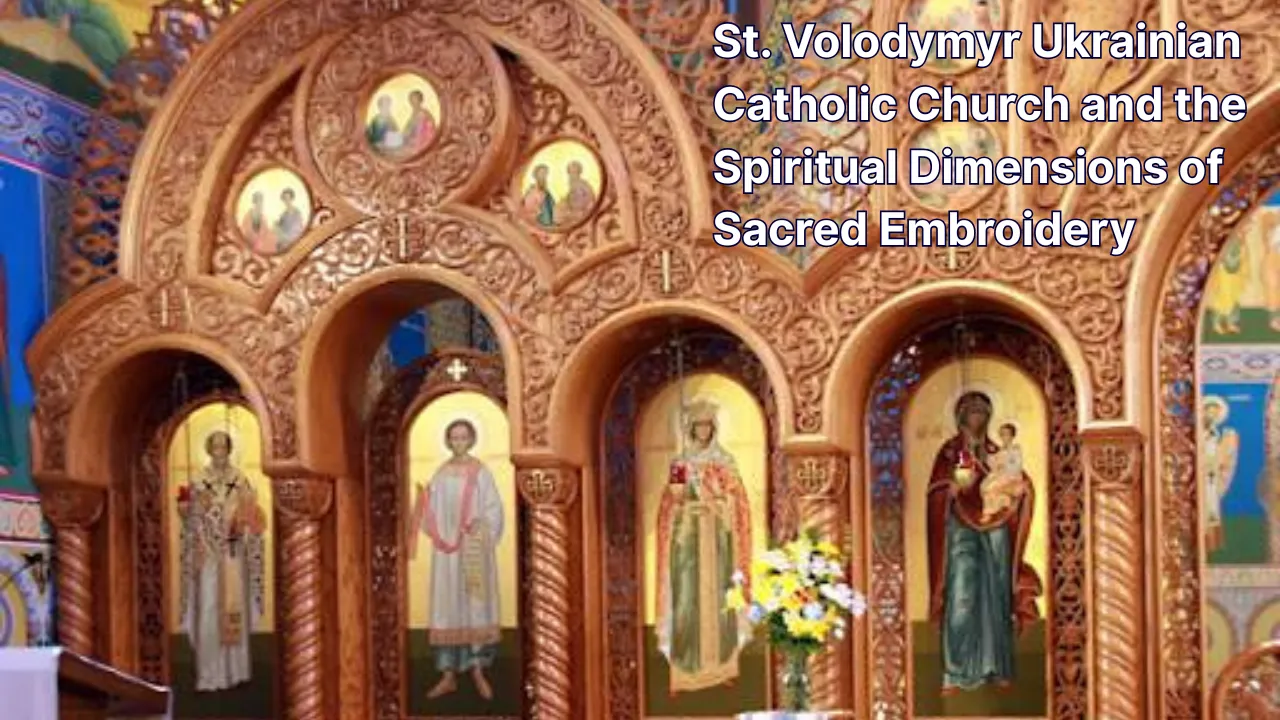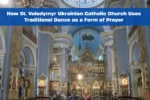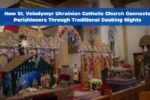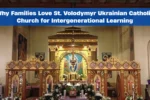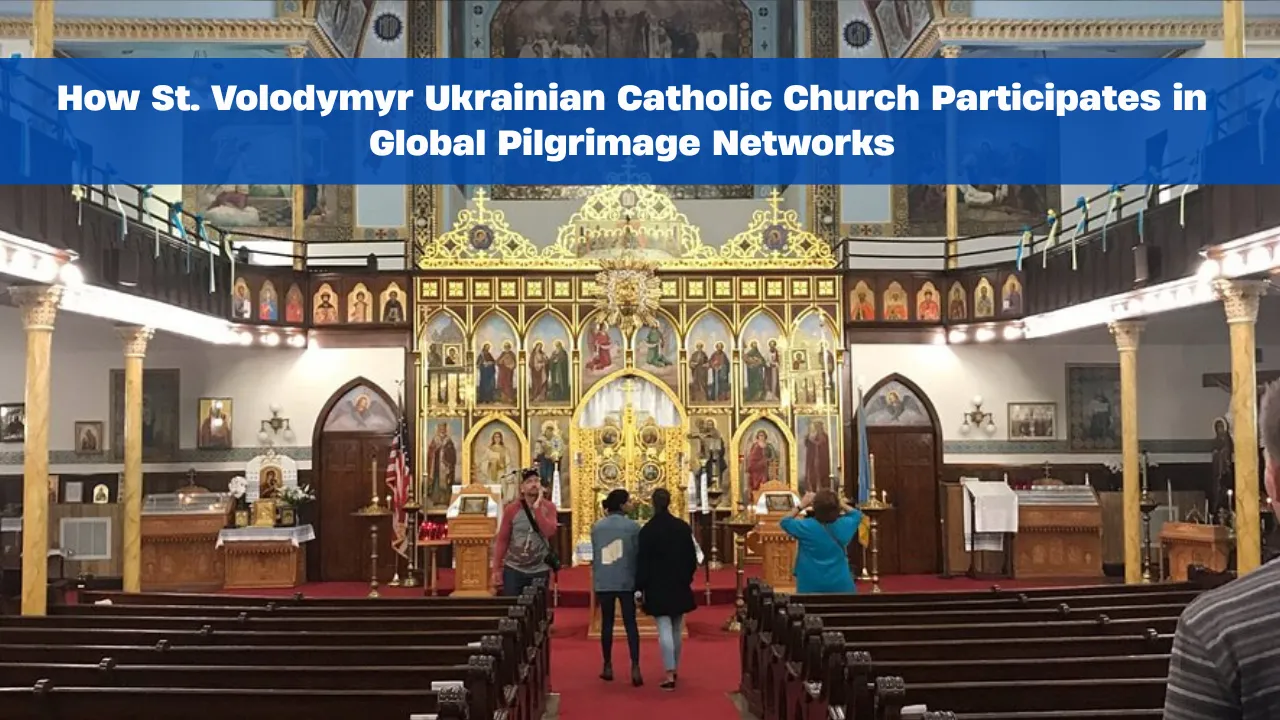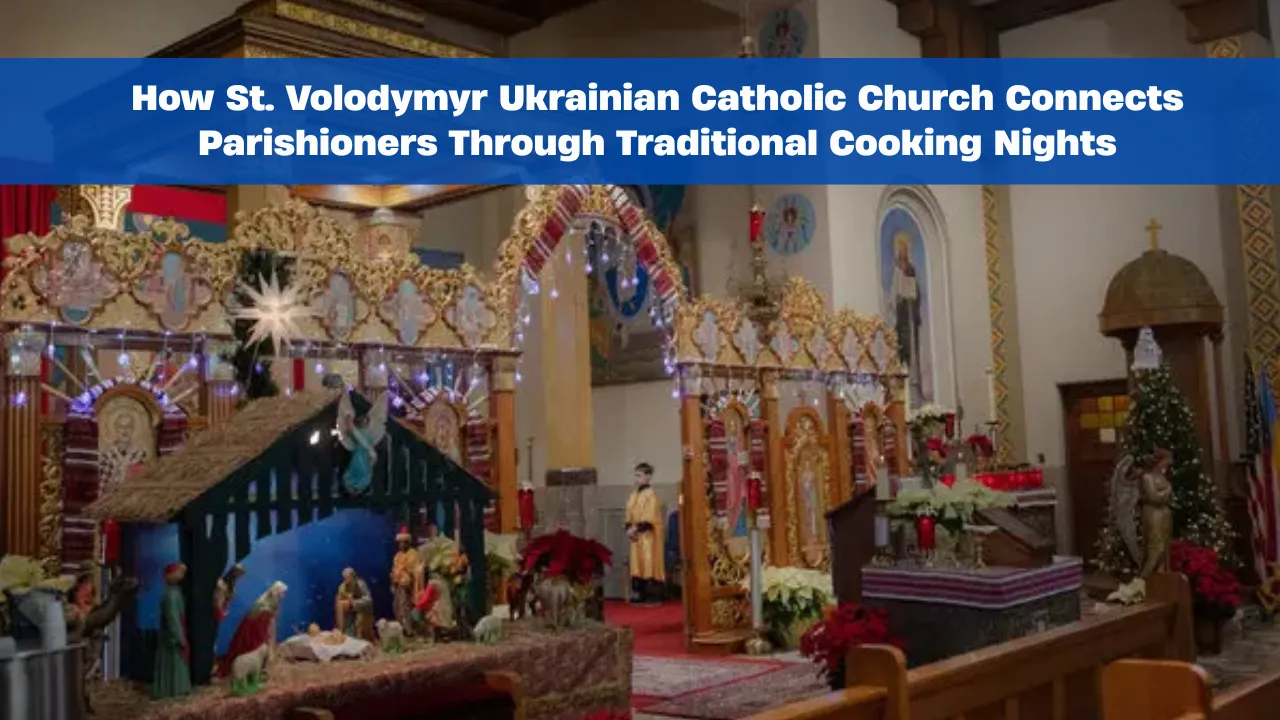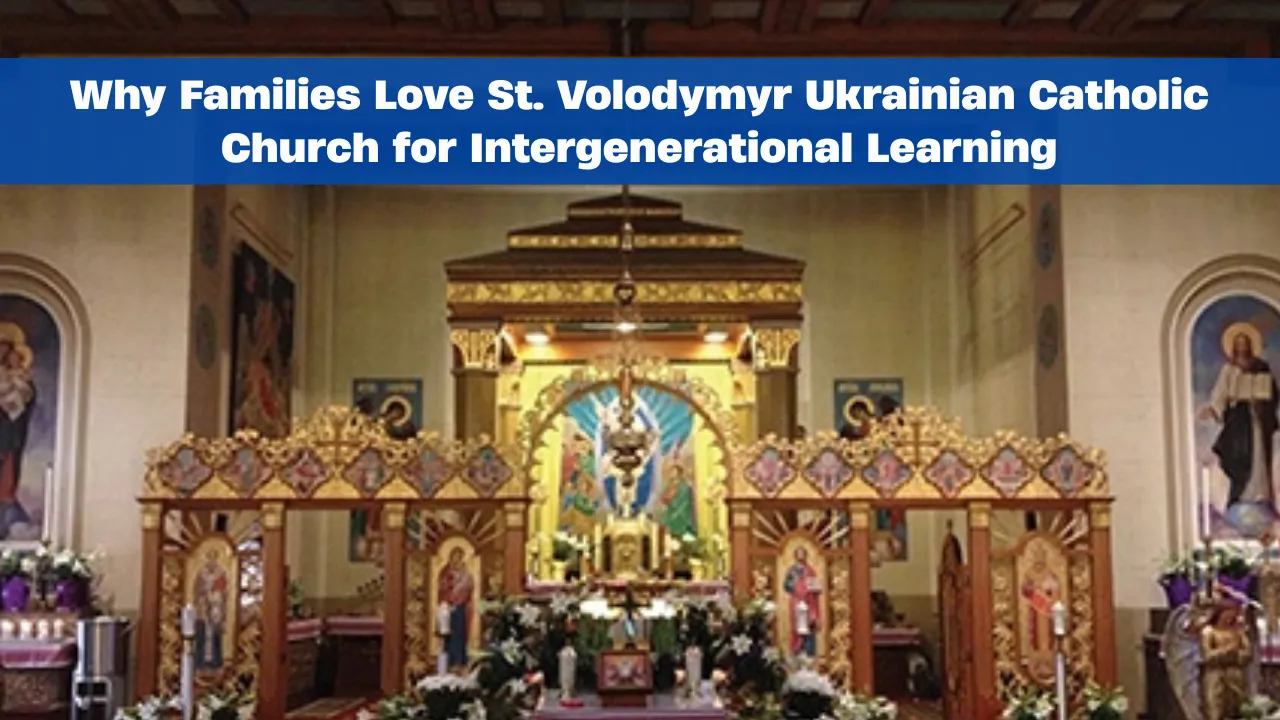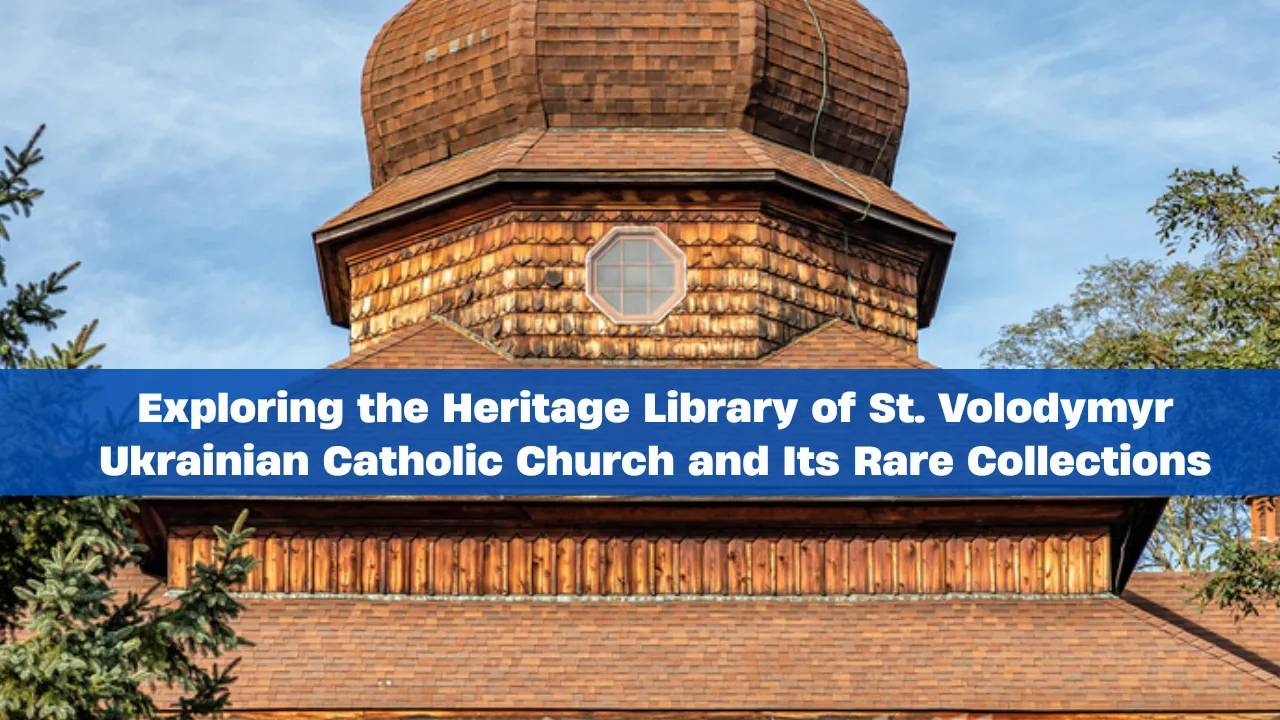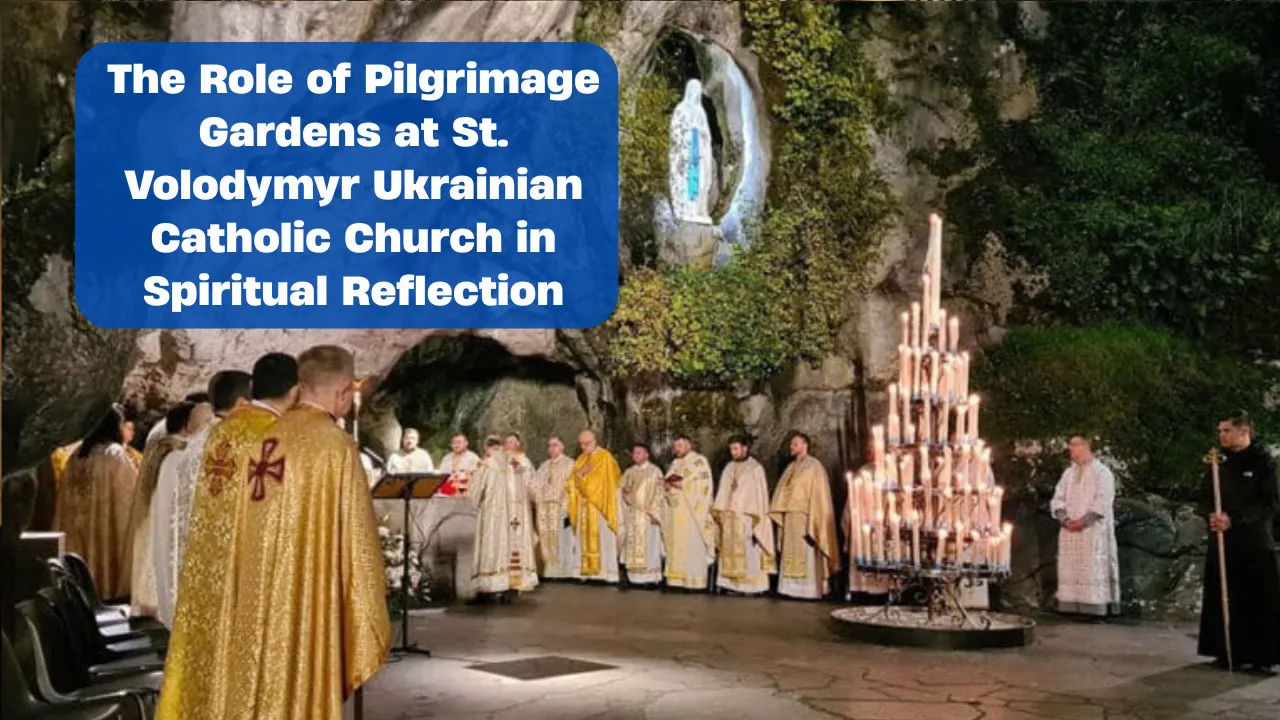Sacred Embroidery: Sacred embroidery is not simply about decorating fabric—it’s a spiritual dialogue, a deep and quiet offering expressed through hands guided by faith. At St. Volodymyr Ukrainian Catholic Church, this form of traditional needlework bridges centuries of devotion, threading together community memory, cultural identity, and sacred ritual into a living tradition.
In this article, we’ll explore how embroidery becomes a spiritual act within the Ukrainian Catholic tradition. Centering on St. Volodymyr Ukrainian Catholic Church, we look at how sacred embroidery carries religious symbolism, serves liturgical purposes, and preserves Ukrainian heritage. You’ll discover how this intricate art form transcends cloth to become a form of silent prayer and communal storytelling.
Sacred Embroidery: Stitching Faith into Fabric
Sacred embroidery serves as a visual language of prayer and devotion, practiced primarily by women in the Ukrainian Catholic tradition. Through carefully chosen colors, symbols, and patterns, this art expresses personal and communal spirituality. What sets it apart is its dual identity—it is both folk embroidery rooted in cultural memory and liturgical art designed for sacred spaces. At churches like St. Volodymyr, these embroidered textiles aren’t just decorations; they’re woven testimonies of faith, handed down through generations. Each stitch reflects a quiet moment of intention, transforming fabric into a medium of worship.
Overview Table
| Element | Description |
| Location Highlight | St. Volodymyr Ukrainian Catholic Church |
| Cultural Influence | Ukrainian Catholic tradition and folk heritage |
| Key Practices | Embroidery during liturgical seasons, community-based stitching |
| Symbolic Elements | Crosses, wheat, grapevines, stars, traditional floral patterns |
| Religious Use | Vestments, altar cloths, banners, icon veils |
| Contemporary Practice | Intergenerational workshops, modern adaptation of old techniques |
The Role of Sacred Embroidery in Ukrainian Catholic Tradition
Within the Ukrainian Catholic tradition, sacred embroidery has never been viewed as mere decoration. It has always had a deeper meaning—a way to physically represent the sacred in everyday life and in holy spaces. This embroidery decorates everything from altar cloths to vestments to ceremonial banners. In many churches, such as St. Volodymyr, you’ll find every stitch rooted in prayer and cultural pride.
Patterns passed down through generations carry more than artistic value. They embody faith, history, and resilience. Women often began stitching these religious textiles during significant liturgical seasons like Lent, entering a meditative rhythm that aligned both hand and heart with spiritual preparation. Through the fusion of tradition and prayer, sacred embroidery continues to be an integral part of church life.
St. Volodymyr Ukrainian Catholic Church: A Living Testament
Walking into St. Volodymyr Ukrainian Catholic Church is like stepping into a sacred gallery. The walls, altars, and holy spaces are adorned with embroidered works made not by professionals, but by parishioners offering their talents in service to God. Each piece is handcrafted, often with materials collected over years, and every item carries the touch of a personal journey.
The church serves not just as a house of worship but as a living archive of Ukrainian cultural expression. Embroidered icon veils, altar runners, and vestments all tell stories—from family legacies to expressions of faith in hard times. At St. Volodymyr, embroidery is not a relic; it is a living part of the parish’s spiritual rhythm.
Symbolism in Sacred Embroidery
Symbols used in sacred embroidery are far from ornamental. They function like scripture in thread. A sheaf of wheat may represent the Eucharist, while the grapevine reminds worshippers of Christ’s blood. Crosses appear in many forms, often combined with stars, representing divine light.
Each pattern is carefully chosen. The embroidery isn’t made casually; it’s designed with theological intent. Color plays a significant role as well—red might indicate divine love, blue can symbolize the Virgin Mary, and white expresses purity. These details invite worshippers into deeper reflection, giving them more than an image—giving them a layered spiritual experience.
Embroidery as a Form of Prayer
In Ukrainian communities, especially among older generations, embroidery is considered a kind of prayer through stitching. The act itself becomes meditative. It creates a quiet space for contemplation, especially during long winter evenings or holy seasons.
Mothers and grandmothers often taught the practice to daughters not just as a skill, but as a way to connect spiritually. By focusing attention and intention on each stitch, the embroiderer engages in a form of devotion that is tactile, rhythmic, and full of meaning. Many say they feel closest to God while embroidering for their church.
List of Common Elements in Sacred Embroidery
- Liturgical Cloths: Including altar runners, icon veils, and chalice covers, often made seasonally.
- Priestly Vestments: Embroidered robes, stoles, and cuffs worn during Mass and feast days.
These items form part of a sacred atmosphere, where fabric becomes a vessel of reverence. They bring color and dignity to worship while connecting people across time and space through shared faith.
Cultural Identity and Sacred Embroidery
Beyond the walls of the church, sacred embroidery plays a crucial role in preserving Ukrainian cultural identity. In diaspora communities especially, embroidery offers a way to maintain a connection to ancestral roots. A pattern used on a banner in Canada may have originated in a small village in Western Ukraine generations ago.
Homes of Ukrainian families often feature embroidered cloths covering icons or family altars, extending sacred space into daily life. These fabrics hold stories—of immigration, survival, joy, and faith. They are passed on with care, seen not only as decoration but as a kind of spiritual heirloom.
Sacred Embroidery in Modern Times
While many younger generations are unfamiliar with the traditional methods, there is a quiet revival happening. Churches like St. Volodymyr and Ukrainian cultural centers are organizing workshops to teach traditional needlework techniques. These events are less about perfection and more about spiritual connection and cultural education.
Some artisans are even blending modern design with traditional patterns, making religious textiles that appeal to younger audiences. The heart of the practice, though, remains unchanged. Whether stitched by a grandmother in a village or a student in a city, the goal is the same: to glorify God through beauty and intention.
FAQs
What is the meaning behind sacred embroidery in Ukrainian churches?
It symbolizes prayer and devotion, often using traditional symbols to represent spiritual themes like faith, purity, and the sacraments.
Who typically makes sacred embroidery?
Traditionally, women in the parish or family create it, passing techniques down through generations as a spiritual and cultural practice.
Is sacred embroidery still practiced today?
Yes, especially in churches and communities focused on preserving Ukrainian heritage. Workshops and classes are helping keep the tradition alive.
Can sacred embroidery be used at home?
Absolutely. Many Ukrainian homes use embroidered cloths in prayer corners or around icons as part of their everyday spiritual life.
What makes sacred embroidery different from folk embroidery?
Sacred embroidery is created for religious use, with symbolic meaning tied to liturgical seasons, church rituals, and theological concepts.
Final Thought
Sacred embroidery is more than art; it is an expression of lived faith, cultural memory, and personal devotion. At St. Volodymyr Ukrainian Catholic Church, these embroidered works do not simply adorn—they testify. They hold prayers in every thread, stories in every symbol, and reverence in every pattern.
As this timeless practice continues to inspire and evolve, it reminds us that spirituality isn’t always spoken—it can be stitched. Whether you’re a member of the Ukrainian Catholic community or simply someone seeking deeper connection, consider exploring the quiet beauty of this sacred tradition.
Have you experienced sacred embroidery in your community? Share your story below—and don’t forget to explore more about your spiritual path or cultural heritage through related content.
